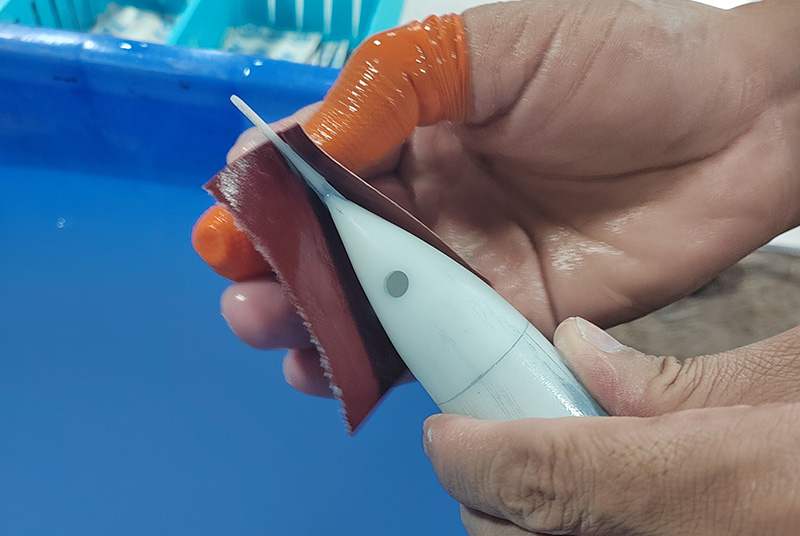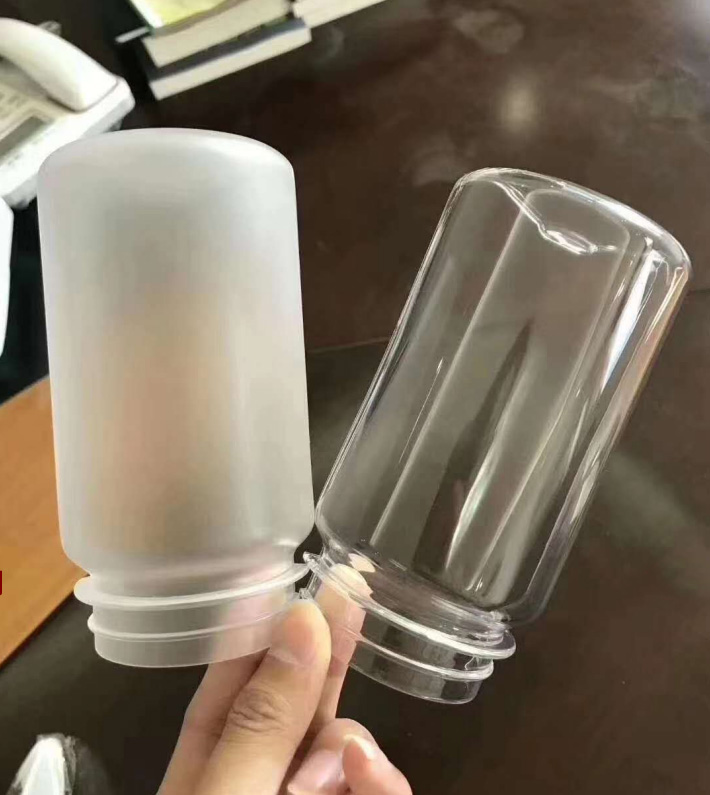
Grinding and polishing
Grinding and polishing is to better solve the problem of surface smoothness of the rapid prototyping products.

1、 Polishing
Polishing is a type of surface modification technology, generally referring to a processing method that uses rough objects (such as sandpaper containing high hardness particles) to change the physical properties of material surfaces through friction, with the main purpose of obtaining specific surface roughness.
The objects printed by FDM and SLA processes generally have obvious layer patterns. If there are requirements for the surface of the object, it needs to be polished, filled with soil, colored, and other treatments.
Sandpaper polishing
The types of sandpaper are mainly classified by the thickness of surface particles, commonly including 180 mesh, 400 mesh, 600 mesh, 800 mesh, 1000 mesh, 1200 mesh, 1500 mesh, 2000 mesh, 2500 mesh, 3000 mesh, and 5000 mesh. The lower the grade of sandpaper, the larger the particles and the rougher the surface.
The polishing sequence starts from the lower grade, starting with 180 mesh, passing through 400 mesh, 600 mesh, 800 mesh, 1000 mesh, 1200 mesh, 1500 mesh, and finally polishing to 2000 mesh or above before painting.

2.Sandblasting
Sandblasting treatment is the process of using the impact of high-speed sand flow to clean and roughen the surface of the substrate. Using compressed air as power, a high-speed jet beam is formed to spray materials (such as copper ore, quartz sand, diamond sand, iron sand, etc.) onto the surface of the workpiece to be treated at high speed, making the surface of the workpiece smooth and having a uniform matte effect. Due to the impact and cutting effect of abrasives on the surface of the workpiece, the surface of the workpiece obtains a certain degree of cleanliness and different roughness, improving the mechanical properties of the workpiece surface. Therefore, the fatigue resistance of the workpiece is enhanced, the adhesion between it and the coating is increased, the durability of the coating is prolonged, and it is also conducive to the leveling and decoration of the coating.
Sandblasting application:
(1) Pre treatment of workpiece coating and bonding: Sandblasting can remove rust and other dirt on the surface of the workpiece, making the bonding of the bonded parts more firm.
(2) Cleaning of rough surface of castings and workpieces after heat treatment: Use polishing and sandblasting to make the appearance of the workpiece more beautiful and attractive.
(3) Cleaning and beautification of burrs on machined parts: Sandblasting can clean small burrs on the workpiece, making the surface of the workpiece appear more precise.
(4) Improving the mechanical performance of parts: After sandblasting, mechanical parts reduce noise and increase their service life.
(5) Decorative function: For certain special purpose workpieces, sandblasting can achieve different reflections or sub gloss at will.